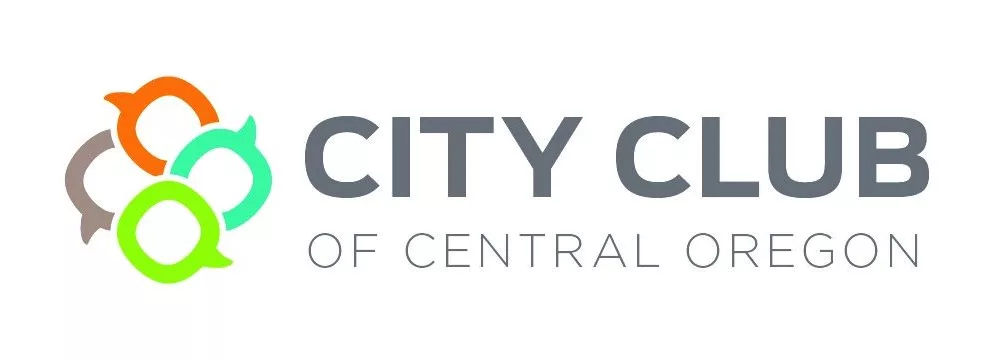Bolstered by a big jump in funding from U.S. government agencies, Oregon State University’s research awards in the last fiscal year surged to $480 million, a university record.
Of that total, 89% came from federal organizations such as the National Science Foundation and the National Institutes of Health.
The $426.7 million in federal funding in fiscal year 2023, which ended June 30, represents a 45% increase from the FY22 figure of just under $294 million.
Oregon State’s overall research expenditures – a key barometer used by major universities to measure research productivity – also soared, rising to a university record of $367 million, a 23% year-to-year increase.
“The state, region, nation and world look to Oregon State University to advance solutions-based research to address earth-scale problems,” said OSU President Jayathi Murthy. “Research awards recognize the extraordinary efforts of our faculty and staff and the strategic investments being made by our research office to expand OSU’s capacity to meet some of today’s most pressing opportunities and challenges.”
Oregon State in 2023 changed its method for totaling research awards, omitting income such as licensing revenue, fees for testing and services, and certain gifts to the Oregon State University Foundation. The new way of tabulating aligns OSU with most other major research universities.
In addition to money from federal sources, the research awards include funding from state and local governments, foreign governments, industry and nonprofits. More than $2.3 million in awards went to OSU-Cascades in Bend.
The contributions of research by Oregon State faculty and students extend worldwide, notes Irem Tumer, OSU vice president for research, and include:
- Partnering with Pacific Northwest potato industry and Native American Tribes on a $50 million U.S. Department of Agriculture project to find practical ways for farmers to more widely use climate-smart farming practices to improve soil health.
- Improving the intelligence and functionality of underwater vehicles for applications such as construction, marine exploration and ship maintenance, a $5.3 million effort funded by the Office of Naval Research.
- Closing the gap between the number of cybersecurity job openings and the number of qualified applicants for those positions, a $4.8 million project supported by the NSF.
- Leading a $4 million NSF program that will engage educators, artists and writers in polar science activities and increase the impact and visibility of the scientific work underway in the Arctic and Antarctic. The program is Polar STEAM, which stands for science, technology, engineering, arts and mathematics.
- Hosting the OSU Marine and Geology Repository, one of the nation’s largest collections of oceanic sediment cores, through a $4.6 million, five-year renewal from the NSF. Since 2010, Oregon State has received $12 million from the NSF for the repository.
Oregon State’s fiscal year 2023 research expenditures rose for the 19th time in 21 years, Tumer said.
“Research expenditures have proven to be strongly indicative of impactful results,” she said. “Those expenditures are monies invested in laboratories and field work with the goal of advancing knowledge that helps make life better for people through greater health and resilience for communities, economies and the environment.”
For example, scientists led by an Oregon State chemist have developed a new electrolyte that raises the efficiency of the zinc metal anode in zinc batteries to nearly 100%, a breakthrough on the way to an alternative to lithium-ion batteries, whose production relies on shrinking supplies of rare metals such as cobalt and nickel.
The research, funded by the NSF and the Department of Energy and published in March, is part of an ongoing global quest for new battery chemistries able to store renewable solar and wind energy on the electric grid for use when the sun isn’t shining or the wind isn’t blowing.
Other research highlights from the past year include:
- The launch of the first of three new oceanographic research vessels dedicated to advancing marine science along U.S. coasts. The ship, R/V Taani, is being constructed as part of a project, led by Oregon State and funded by the NSF, to provide scientists with valuable new tools to study critical issues such as rapidly changing ocean conditions and human impacts on the marine environment.
- The discovery that gravitational waves, ripples in the fabric of time-space predicted by Albert Einstein more than a century ago, are permeating the universe at low frequencies. The findings arose from a multiyear NSF project spearheaded by OSU astrophysicists.
- The completion of design development on the $213 million Jen-Hsun and Lori Huang Collaborative Innovation Complex. OSU will break ground in December on the complex, which will have a state-of-the-art clean room and one of the nation’s most powerful supercomputers, as well as other specialized research spaces. The complex will host team-based research in artificial intelligence, materials science and robotics to solve global challenges in areas such as climate science, clean energy, sustainability and water resources.
In addition to federal awards, Oregon State’s FY23 research funding includes $16.9 million from state and local governments; $12.2 million from nonprofits; and $853,000 from foreign governments.
OSU also received $12.4 million from industry as the university continues to serve as an economic driver and business enabler. An important component of that work is the OSU Advantage Accelerator, which spurs societal and economic impact through the innovation and entrepreneurship ecosystem.
Espiku, a company founded by an OSU-Cascades mechanical engineer and launched through the Accelerator, continues to make advances in desalination, turning saltwater into potable water through a patented, environmentally friendly process. The company’s mission is designing and developing water treatment and mineral extraction technologies that are efficient, cost-effective, portable, modular and deployable anywhere.
Five other promising startups launched through the Accelerator in fiscal year 2023, according to Brian Wall, associate vice president of research, innovation and economic impact at Oregon State.
They are: 360 Sierra, manufacturer of “glamping” tent trailers; Rootopia, an infotainment company focused on getting K-12 students to raise and eat vegetables; Livestock of the World, a global trading platform for small and medium-sized livestock farmers; Toast Wear, Inc., producer of a personal heater for winter sports enthusiasts; and Noble Ocean Farms, Inc., which seeks to strengthen food security by providing nutrient-rich kelp while also enhancing marine biodiversity.
On top of the rise in research awards, OSU’s research- and innovation-related income from cooperatives, licensing and royalties increased 60% from the previous year to a total of $12.9 million. Gifts to the OSU Foundation in support of research totaled nearly $2.7 million.
Further information about Oregon State research is available online. Summaries of work performed by OSU research centers and institutes can be viewed here, and project descriptions and FY23 research totals for OSU colleges can be seen by clicking on the links below:
College of Agricultural Sciences: https://agsci.oregonstate.edu/home/article/college-agricultural-sciences-receives-record-breaking-annual-research-funding
College of Business: https://business.oregonstate.edu/faculty-and-research/research
College of Earth, Ocean, and Atmospheric Sciences: https://ceoas.oregonstate.edu/ceoas-out-there
College of Education: https://education.oregonstate.edu/research
College of Engineering: https://engineering.oregonstate.edu/all-stories/fy-23-research-funding-highlights
College of Forestry: https://blogs.oregonstate.edu/collegeofforestry/2023/08/31/fy-2023-research-awards/
College of Liberal Arts: https://liberalarts.oregonstate.edu/cla-research/funded-research
College of Pharmacy: https://pharmacy.oregonstate.edu/research-award-activity-fiscal-year-activity
College of Public Health and Human Sciences: https://health.oregonstate.edu/research/funding-highlights
College of Science: https://science.oregonstate.edu/2023-research-highlights
College of Veterinary Medicine: https://vetmed.oregonstate.edu/fy-2023-research-highlights
0-
About Oregon State University: As one of only three land, sea, space and sun grant universities in the nation, Oregon State serves Oregon and the world by working on today’s most pressing issues. Our more than 35,000 students come from across the globe, and our programs operate in every Oregon county. Oregon State receives more research funding than all of the state’s comprehensive public universities combined. At our campuses in Corvallis and Bend, marine research center in Newport, OSU Portland Center and award-winning Ecampus, we excel at shaping today’s students into tomorrow’s leaders.
On-campus TV and radio services: Oregon State University is equipped with on-campus television and radio studios/services that can be used by journalists. Live or live-to-tape broadcast television and radio interviews can be conducted using Vyvx, Zoom, Webex or Comrex (IP Audio). Oregon State staff can also gather b-roll and coordinate live-to-tape interviews on locations throughout campus. For radio, Oregon State’s Comrex (IP Audio) provides a broadcast-quality audio feed.






